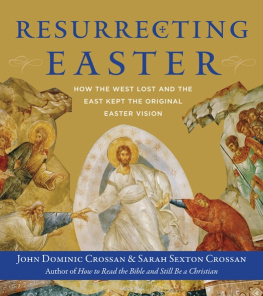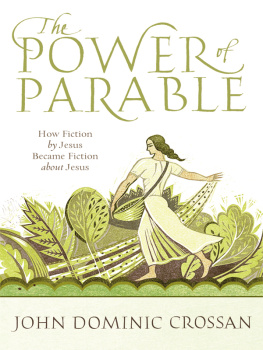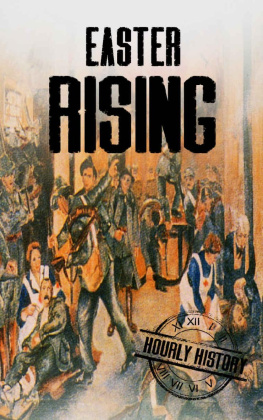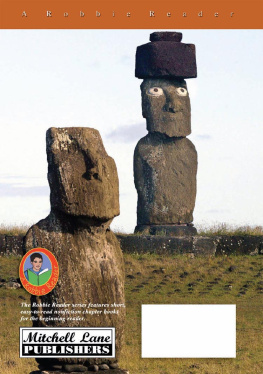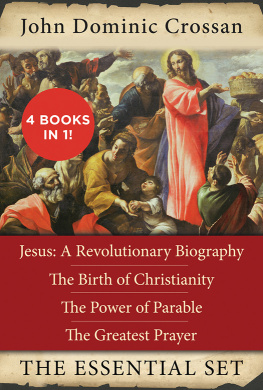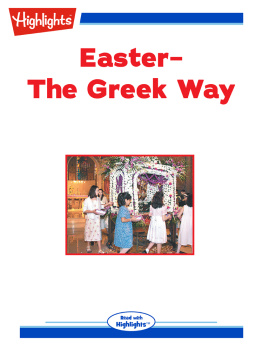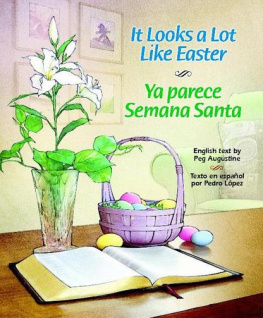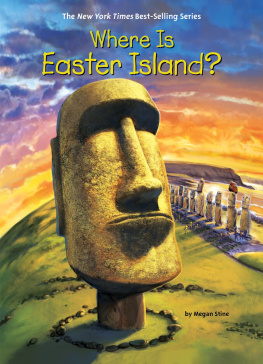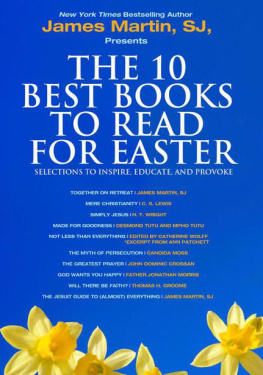To Eastern Christians,
who suffer greatly,
live dangerously,
and survive precariously,
in the original heartland
of Christianity
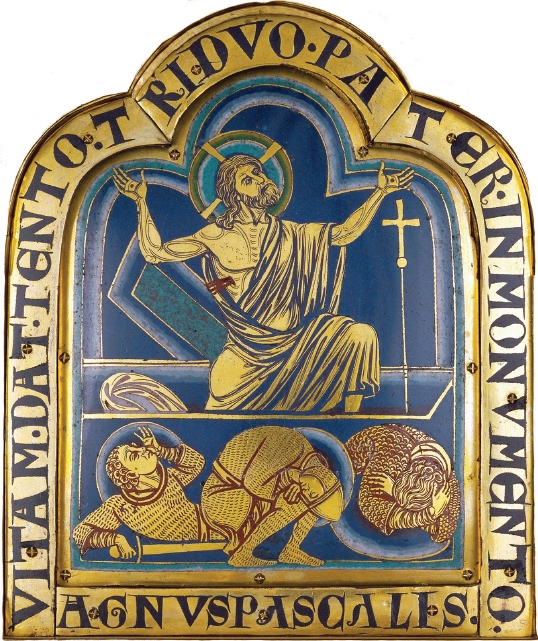
Contents
Guide
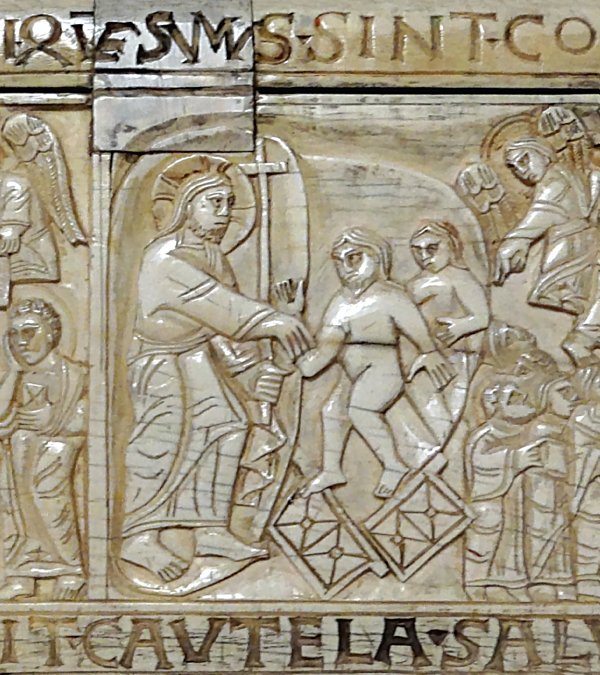
If Christ did not rise for us, then he did not rise at all, since he had no need of it just for himself. In him the world arose, in him heaven arose, in him the earth arose. For there will be a new heaven and a new earth.
ST. AMBROSE OF MILAN, On the Death of His Brother Satyrus, 2.102 (379)
R esurrecting Easter is a debate about ideas and images or, better, a debate about ideas presented in and by images. It is a tour through thought and theology, an expedition across geographical space and historical time, and, finally, a passage from religious tradition to human evolution. It concerns a struggle between two visions of Christs Resurrection, studies a conflict between two images of Easters icon, and asks what is here at stake both inside and outside Christianity. This is how the problem unfolds.
The major events in Christs life and therefore the major feasts in the churchs liturgyfrom the Annunciation to the Ascensionare described in Gospel stories and so can be depicted in any medium. Biblical artists illustrate visually and creatively what they read verbally and traditionally. That is why, despite brilliance in artistic imagination and genius in technical invention, those images remain easily recognizable across the centuries by those who know either the Gospel story or art history.
We just mentioned Annunciation to Ascension, but there is one exception in that overall sequence, one event in the life of Christ that is never described in any Gospel story. Furthermore, this is not some minor happening, but the most important and climactic one of them all. This is the moment of Christs Resurrection as it is actually happening. Thisunlike all other Gospel eventsis never described in itself. But if it is never described in the text, how can it ever be depicted in an image?
Maybe, you say, the Resurrection is simply too mysterious, too far above human comprehension for any possible description. But there are many other mysterious events in Christs lifethe Transfiguration, for instanceand they all get quite adequate descriptions. Is the Resurrection any more mysterious than the Ascension? No, yet the latter is described twice, in Luke 24:5051 and Acts 1:911. So why is there no description of the Resurrection, and then how do you depict something that isnt described anywhere?

A distinction is crucial here between direct and indirect portrayals of an event. You can either describe and depict an event directly in itself, for example, the Crucifixion in all its explicit details; or you can describe and depict it only indirectly in its effects, for example, the Piet, which shows Mary holding the executed Christ on her lap. The choice is always there: directly describe and depict the event or indirectly describe and depict the effect, the result, the consequence, of that event.
Of Christs Resurrection there are so many indirect descriptions that their sheer exuberance masksdeliberately or notthe absolute absence of any direct report of the event itself as it was actually happening. The description of so many consequences obscures the fact that there is no description of the event itself. These multiple aftereffects fall into two major trajectories of post-Resurrection Gospel stories.
One is the empty-tomb tradition, in which female or male disciples discover the vacant tomb on Easter Sunday morning. This involves one (John 20:12), two (Matt. 28:1), three (Mark 16:1), or more women (Luke 24:10). It can also involve males in some competition with one another (Luke 24:12; John 20:310).
The other is the risen-vision tradition, in which female or male disciples see the risen Christ. This can involve one woman (John 20:1118), two women (Matt. 28:910), or a married couple (Luke 24:1332). Locations can be in Jerusalem, in a room (Luke 24:3649; John 20:1929) or on a hill (Luke 24:5053; Acts 1:12); in Galilee, on a mountain (Matt. 28:1620); or by the lake (John 21:14).
These two traditions areand ever remainpowerful but indirect solutions to the Gospels lack of any direct Resurrection story. Still, the question presses. From the Nativity through the Crucifixion, we have the events in Christs life presented directly as they happened. How can the Resurrection, the most important event of them all, be the only one lacking a direct presentation? It is comparatively inconsistent and thus clearly unacceptable that Easter alone be depicted indirectly, even if profusely so.
It is not surprising, therefore, and was probably inevitable, that Christian imagination eventually created a direct image of Christs Resurrectionjust like all those other direct depictions of events in Christs life. But it is certainly surprising that it created two different images, two stunningly divergent images. No such duality, and certainly no such competing duality, ever happens for any other event in the life of Christ or in the sequence of major church feasts.
The first direct image of the Resurrection appeared by the year 400. We consider it part of the individual resurrection tradition, because it focuses on Christ alone. It imagines Christ rising in splendid, triumphant, and transcendent majesty, but also in splendid, triumphant, and transcendent isolation. This first Easter image is derived from the story of the guarded tomb found only in Matthews Gospel (27:6266; 28:24, 1115). How, why, and where this happens is a first major theme in Resurrecting Easter.
The second direct Resurrection image was created by the year 700. We term it part of the universal resurrection tradition because, instead of arising alone, Christ raises all of humanity with him. He reaches out toward Adam and Eve, the biblical parents and symbols for humanity itself, raises them up, and leads them out of Hades, the prison of death. This second Easter image is not derived from the story of the emptied tombs found only in Matthews Gospel (27:51b54). How, why, and where this happens is a second major theme in Resurrecting Easter.
Think for a moment about those two images and about the different theological visions behind them. Reread what Ambrose, the sainted archbishop of Milan, wrote in the epigraph to this chapter: In him the world arose, in him heaven arose, in him the earth arose. He wrote it about the same time that the image belonging to individual resurrection tradition appeared, and yet it seems a far better description of the universal resurrection traditions depiction.
What happens between those two traditions across the millennia of Christianity? Will one, the other, or some combination of both ever become the single, official, and traditional Easter icon? If both remain, how will that dualism endure within the same religion? Those issues are a third major theme in Resurrecting Easter.

We have, in summary, two major traditions each for both the indirect and the direct depictions of Christs Resurrection across the millennia of Christianitys existence ( this emphasis.
One is that the individual version becomes, by the second millennium, the official Easter icon of Western Christianity. As such, it is the one we know best as Westerners, and we may even presume, mistaking part for whole, that it is the only one present throughout Christian history. In this book, therefore, the emphasis is on universal over individual iconography for Christs Resurrection as remedial education for Western Christians. During the last fifteen years, it has been precisely that for us.
Next page
